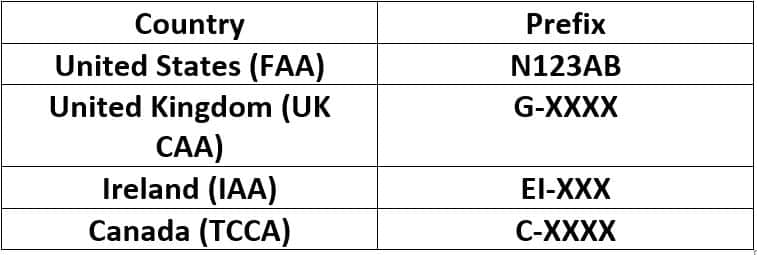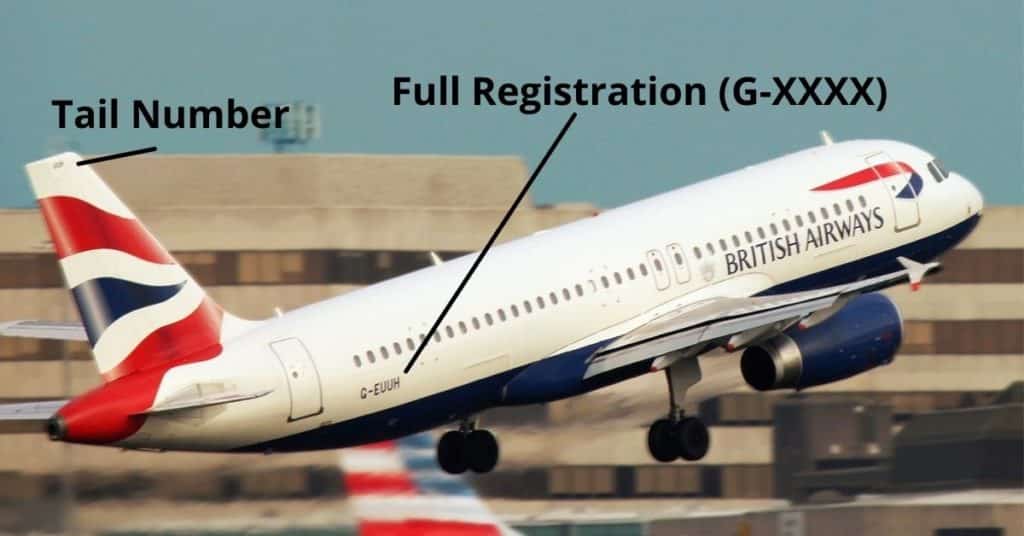In aviation terminology, there are often various terms used to describe specific aspects of an aircraft’s details.
These terms are important for reference and record keeping purposes, as they provide information about the aircraft to the relevant authorities or groups which require it.
Two of the most specific terms associated to an aircraft are its registration and serial number.
An aircraft registration is the unique identifier assigned by the country/region in which it is registered to.
This is issued by the National Aviation Authority (NAA) of the country of registration. For example, an aircraft registered in the United States has its certificate of registration issued by the Federal Aviation Administration (FAA).
Throughout an aircraft’s lifecyle, it is not uncommon for the aircraft to be re-registered with a new tail number or registration.
Do Aircraft Serial Numbers Change?
However, the serial number of an aircraft issued by the manufacturer at time of production never changes throughout the lifecycle of the aircraft.
The serial number remains consistent throughout the life of the aircraft, regardless if there’s a change of operator and/or registration.
Aircraft Registration by Country
As mentioned above, the registration of an aircraft is issued by a country’s National Aviation Authority (NAA). Every country is assigned a registration prefix by ICAO, the International Civil Aviation Organisation. Some examples of these prefixes include:

The registration of the aircraft is found in several locations throughout the aircraft. Typically there is a placard stating the registration in the cockpit, the full registration on the empennage portion of the aircraft along with tail numbers found on the nose landing gear door and on the upper portion of the tail (vertical stabilizer).

Aircraft Serial Numbers
Unlike registration or tail numbers, aircraft serial numbers are assigned at time of manufacture. Most aircraft OEMs (Original Equipment Manufacturers) assign serial numbers based on chronological order of production. However, the exact designation differs per manufacturer.
The two main civil aircraft manufacturers, Airbus and Boeing, both have separate serial number coding systems. Airbus uses a MSN-XXX (MSN = Manufacturer Serial Number) structure while Boeing uses LN-XXX (LN = Line Number).
Although these systems differ slightly in designations, they serve the same purpose.
The unique serial numbers assigned to aircraft allow for easier traceability for maintenance and documentation purposes. Serial numbers can be useful for referencing batches of a particular aircraft and/or periods of manufacture.
In most instances, an MSN (Airbus) or LN (Boeing) number designation series starts at 1 for each aircraft type.
The serial number of an aircraft is stated on aircraft documentation and also on placards installed at various sections of the aircraft, most noticeably in the cockpit and at the main doors of the aircraft. These placards may also state the Year of Manufacture of the aircraft.
Why do Planes Change Tail Numbers?
Aircraft change tail number or registration during operational changes. For example, if an aircraft is bought by an airline from another country to that of its original operator, the aircraft will usually be re-registered to the country in which the airline is based.
In other instances, an aircraft tail number may be changed for tax purposes. To avail of lower tax rates, it is common practice for airlines and operators to register their fleet to countries/regions with low tax rates.
Examples of this include the Isle of Man (M-XXXX prefix), Guernsey (2-XXXX) and Ireland (EI-XXX). The Isle of Man and Guernsey prefixes being particularly popular with private jet operators.
Read More:
Why Do Planes Accelerate When Landing?

After visiting more than 60 countries, I have probably been on every type of plane there is and visited countless airports. I did my very first international solo trip to South Africa at the age of only 16 and haven’t really stopped traveling since.
Despite the adventurous travel itch, I do have a nerdy side as well – which is satisfied by writing about all things aviation “too boring” for my regular travel blog.

